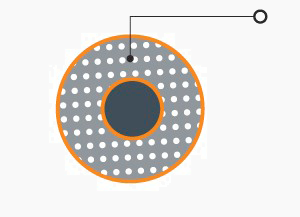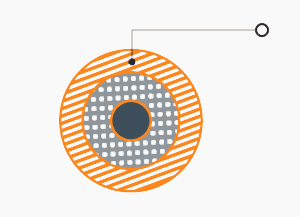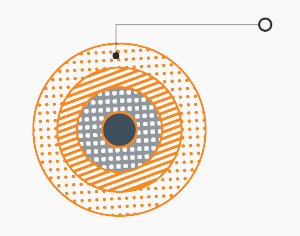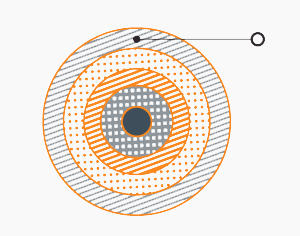Driving Innovation in digitalisation projects can be tremendously complex. Digitalisation in companies crosses traditional organisational borders and derails traditional responsibilities and processes. In order to guid a digitalisation project and enable to manage the change processes we use a reliable framework of thinking.
To drive inventive thinking in our customer projects we apply a distinct Method: SIT. SIT stands for Systematic Inventive Thinking and applies a Method of Thinking and structure for the Process to drive continuous Innovation and Inventive progress. It applies via the Ripple Model. Below you’ll find a description of the ripple model.
The method can be seen as consisting of five layers:
Thinking Tools:
At the heart of SIT’s method is one crucial idea: that inventive solutions share common patterns. Focusing not on what makes inventive solutions different, but on what, if anything, they might have in common, led to the development of the five Thinking Tools that form its core.

Principles:
The tools can only work if they are used properly, and in order for this to happen, the tools are accompanied by several principles which allow you to use the tools optimally and reap the benefits.

Facilitation Skills:
Since most SIT programs are conducted not for individuals, but for teams of participants, a range of facilitation skills are needed to complement the content. Some of these are the sort of skills any good facilitator would need, but many are specific to the setting of an SIT innovation workshop.

Project Management:
This level leads you in the direction of smooth implementation processes for the newly developed ideas. The ability to come up with new ideas is crucial for the process of innovation. However, new ideas are merely the first step in a rigorous process of managing true innovation, since few are the ideas that make it all the way through to the end of the process.

Organizational Innovation
Innovation projects are important, and no single innovation can deliver lasting advantages. In order to grow organically, a company must encourage innovation and creative thinking systematically and continously. Click here and read more.

If you are looking for more information on how to manage inventive and innovation thinking in your organisation or if you face challenges in digitisation projects feel free to talk to us.


